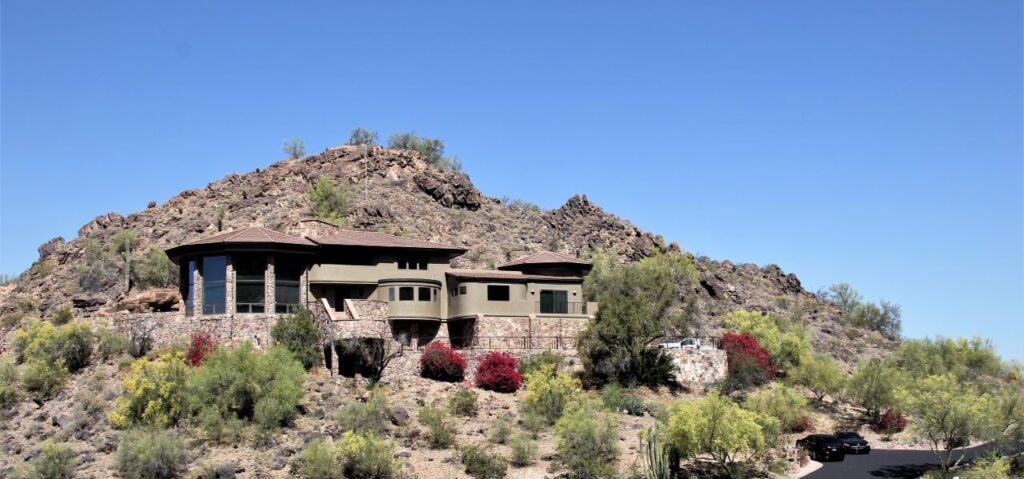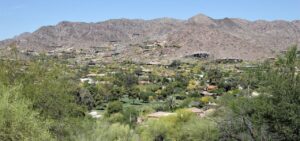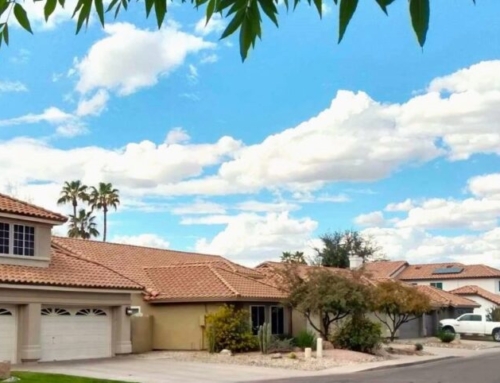How Did Paradise Valley Become Only Acre Lots
People driving through the Town of Paradise Valley often are amazed not only by the luxurious Southwestern and modern homes but also by the size of the residential lots. In fact, Paradise Valley requires that all of them are at least an acre.
It has been that way almost from the time that the community incorporated in 1961. Long before that, it was unincorporated Maricopa County, used mostly for grazing, growing, and hiking recreation.
But the Valley was much smaller then, and the more densely populated neighborhoods and commercial areas were surrounded by open space and mountains. As the region became much more popular and populated, residents of what eventually would be Paradise Valley wanted to preserve the natural desert and mountain beauty of the area, which is what prompted incorporation to save the Sonoran feel of the place.
And that’s what they did.
As it became an official municipality, locals and their elected representatives established the minimum one-acre lot zoning, keeping the upscale, residential focus. The topography of the area, w with undulating altitudes and mountainous landscapes, lent itself to that kind of low-density development. And most who have called it home since have appreciated the distinction.
The policy has obvious advantages – just look at the place – and some costs as well.
Racquel Miller, a Realtor with Russ Lyon Sotheby’s International Realty who focuses on Paradise Valley, says people who want to move to the town appreciate the value the community offers.
“It’s unique, beautiful, upscale, and a valuable part of Arizona’s housing opportunities,” Miller said. “People who live here would have it no other way.”
The pluses and minuses of PV’s large-lot policy
Paradise Valley is expensive, generally showing up as with the highest property values (and commensurate income/wealth), which limits the financial and other demographic diversity in the community. It takes more than a middle-class income to afford to live here.
Some environmentalists and urban planners say that such zoning takes up more land and resources and is less sustainable than more dense communities. The countervailing position is that the entire Valley isn’t this way, and having a place like Paradise Valley makes the housing landscape for the entire region more diverse. Some argue that it helps lure businesses to the region having available upscale housing, which improves the economic health of the entire region.
Also, the original intent remains valid – that such development maintains PV’s scenic beauty, low density, and residential privacy that the founders sought. That’s Paradise Valley’s character, and it seems to work.
And while housing is expensive, the density protects those significant investments and also provides the town with considerable real estate property value for taxation. That’s important in a community with little commercial development and its accompanying sales taxes.
Few could argue with the long-term financial health and charming pocket of life that Paradise Valley represents in the greater Phoenix area. And there has been no hue and cry from residents to change it to anything more dense. So, Paradise Valley likely will continue to be the scenic and luxurious burg that has been called the Beverly Hills of Arizona.
How common is Paradise Valley’s low-density, upscale policies?
Several cities and communities in the United States have similar policies, generally will similar results: Upscale, pastoral, natural, and highly regarded. They are mostly in affluent or semi-rural
areas where residents also want to maintain the unique characteristics of their living environment.
Here are a few of them:
- In California, Rancho Santa Fe in San Diego County has strict covenants regulating lot size for the same reason as PV: Preserving the area’s natural beauty and preserving rural open space. It’s also affluent.
- Also in California, Woodside in the San Francisco Bay Area, is a wooded area with large lot requirements that makes it exclusive and attractive to a wealthier audience.
- Great Falls, Virginia in Fairfax County also has zoning requiring large residential properties that help
- Closer to home, Los Ranchos de Albuquerque in New Mexico seeks to hand on to the region’s agricultural and rural heritage with zoning requiring large lots – also within a metro area that’s mostly much more dense development.
Paradise Valley and these other communities like it (and there are more) deliberately set up their zoning to balance local character, highlight open space, increase privacy, and enable a certain lifestyle. The entire region generally can’t operate the same way, but such niche regions do create an overall balance of housing that accommodates a broad range of incomes and lifestyles.
Wouldn’t you be happy living in Paradise Valley?
The post How Did Paradise Valley Become Only Acre Lots appeared first on Arizona Realty Network.
Related Posts

Contact Form











